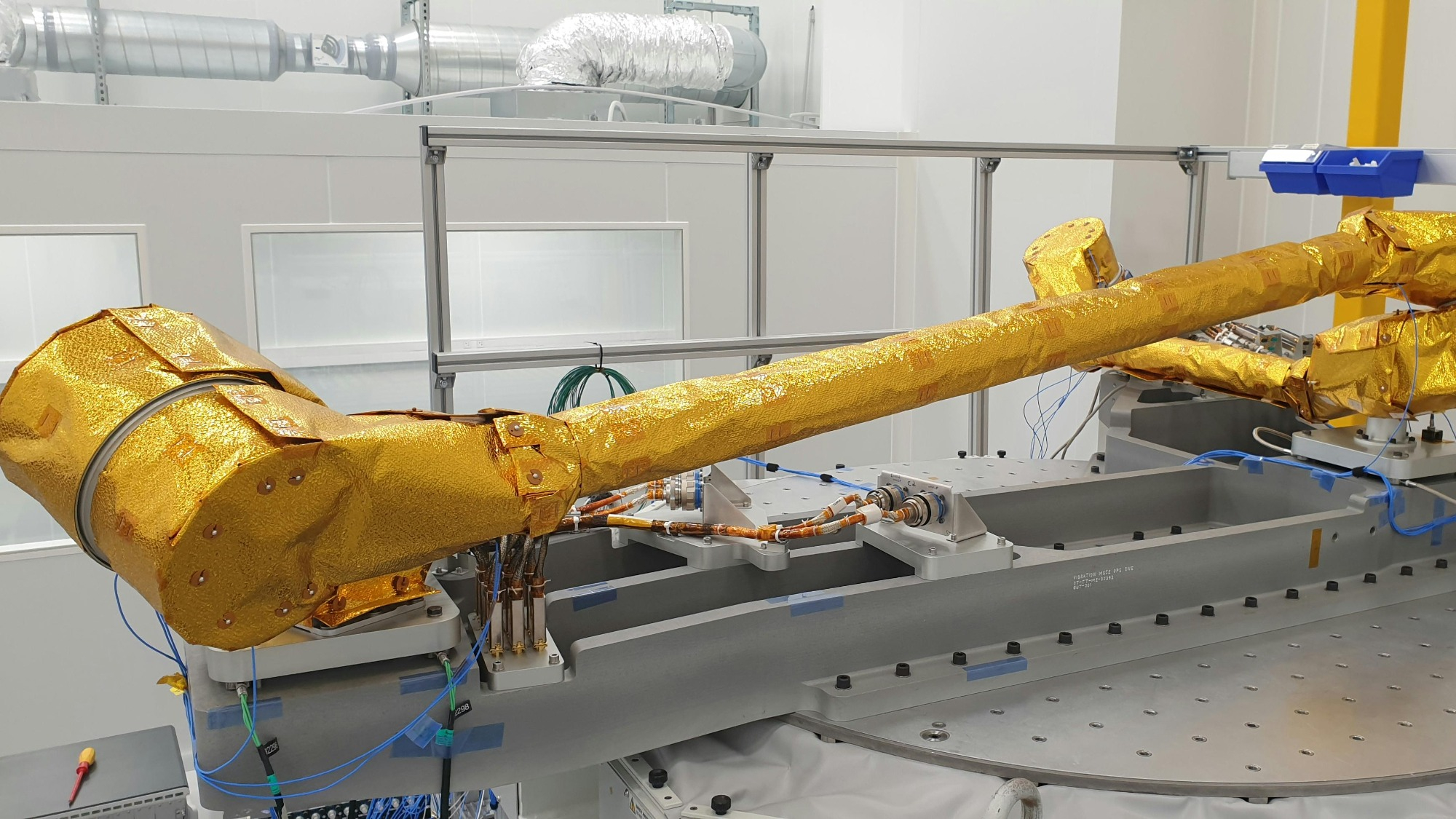

Satellites are usually a bespoke endeavor, requiring a range of specific needs and logistical plans to meet project requirements. To simplify some of these challenges a few years ago, a team of researchers and engineers working together between the European Space Agency (ESA), France’s CNES, the UK Space Agency, and Airbus unveiled the OneSat—a standardized telecommunications satellite capable of adjusting capacity, coverage areas, and frequency “on the fly” while in orbit.
On Tuesday, the ESA announced a new feature passed its inspection reviews and is ready to ship out with future OneSat launches. The latest addition is a “deployment and pointing system” featuring robotic arms capable of positioning a satellite’s plasma thrusters far away from its body. Such an addition will optimize the usage of OneSats’ xenon fuel reserves.
[Related: DARPA wants to push the boundaries of where satellites can fly.]
As tech news site The Next Web noted on Tuesday, the announcement means that OneSat is now “fully propelled by European technology.” In its official statement, the ESA explained that, “The deployment and pointing system promotes European autonomy and constitutes an essential feature of the industrial footprint in Europe of OneSat.”
Construction of the OneSat deployment and pointing system was truly a multinational effort within Europe—France’s Airbus designed the system, while Belgian manufacturer Euro Heat Pipes built the devices. A company in Spain provided its rotary actuator, while the booms, harnesses, and plasma thrusters were all also developed and assembled by multiple French outlets.
[Related: This giant solar power station could beam energy to lunar bases.]
OneSat deployment is meant to have extremely tangible effects across the world, including providing traditional TV broadcasting, boosting in-flight internet connections for air travelers, and helping remote communities gain previously unreliable or wholly lacking access to communications.
Because of their modular design, The Next Web also explained each OneSat can be built using largely off-the-shelf components, thereby allowing them to potentially enter the market in half the time as other satellite options, and for less cost. Multiple companies around the world have already placed orders for OneSat, including Japan’s main satellite operator, SKY Perfect JSAT Corporation. According to the ESA, this marks the first time a European satellite has been sold to a Japanese telecom company.
